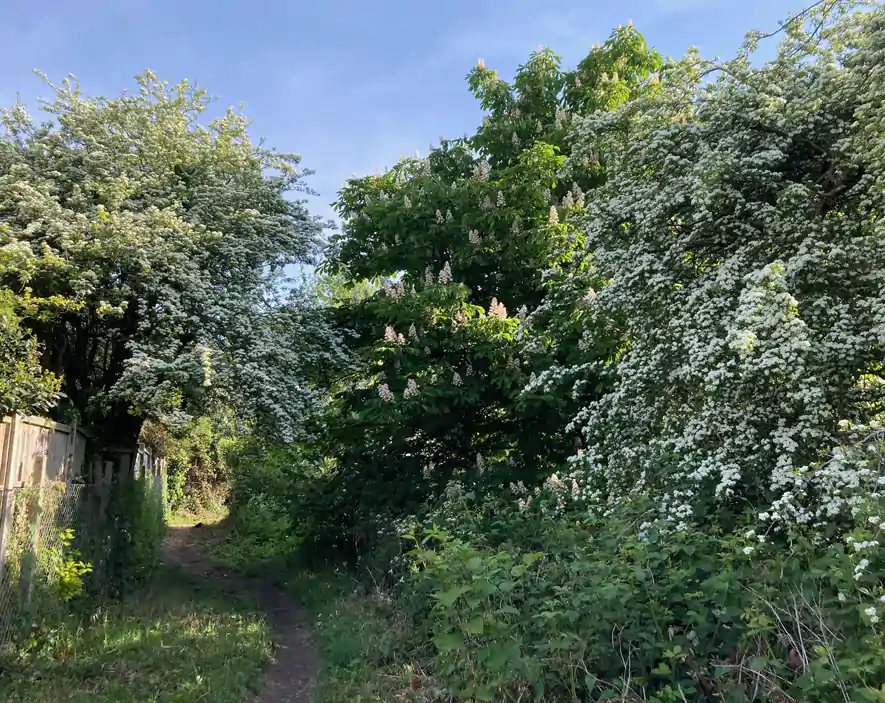The bridleway in May
As featured in The Hovarian magazine, June 2025.
Last year, there was a very wet Spring and the growth in Three Cornered Copse was spectacular.

The explosion in brambles, nettles and overhanging trees made many of the pathways impassable, so last month we were delighted to receive the help of Portslade Green Gym, to help clear the bridle path that runs south to north, through Three Cornered Copse.
Portslade Green Gym are one of dozens of similar groups located around the UK, run entirely by volunteers, to assist with gardening and conservation work. They descend on an area that needs attention, with their own tools, and set to work. This team was booked in by our ranger Paul, and were joined with some of our members, to make a substantial difference to the northern end of the bridle path. Hopefully this can remain clear for the cyclists and walkers (and runners) who pass through the copse. Our heartfelt thanks to the members of Portslade Green Gym for their hard work
Currently, the weather people are saying that this is the driest Spring since 1960. We may not have an overgrowth problem this year.
Incidentally, there is only one bridle path through the copse, and it runs up the western edge of the area, hugging the back fence gardens of Woodland Avenue. Horses from stables in the valley used it to reach the South Downs in less populated times.
The “May tree” is the name of the blossom on the Hawthorn tree and it’s been particularly spectacular in the copse this year. Good soil moisture content is essential for the blossom, and is helped by cold conditions (remember the cold in January?), followed by an early warm Spring with much sunlight to trigger the flowering. This year the blossom started quite early in late April; climate change is tending to bring it forwards as the years progress. Traditionally, the May tree is a pagan symbol of fertility, and is the inspiration for traditional Maypole dancing. In medieval times, it was associated with the Great Plague, as the smell of the flowers is particularly pungent, giving rise to the myth connecting the tree to the smell of the disease.
The Portslade Green Gym are provisionally booked in for another session at the end of June, to work on the lower part of the bridle path. The friends group will join them, so check our website for details nearer the date. There’s plenty to do.
Simon Baxendale
